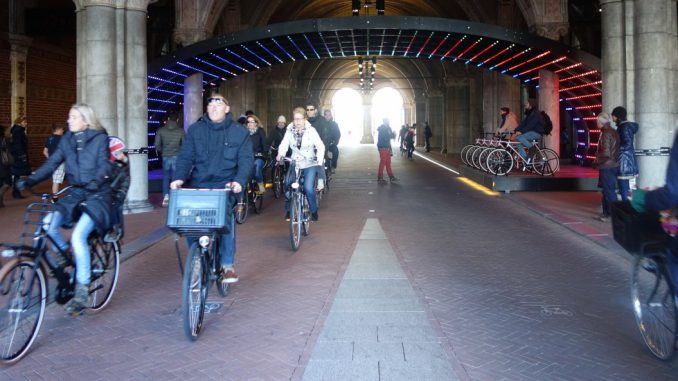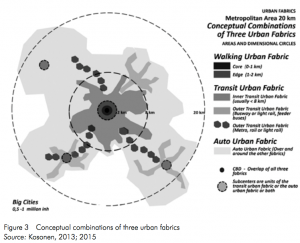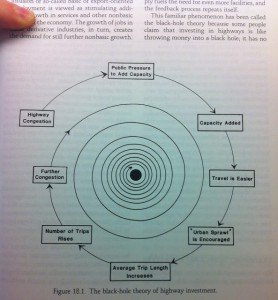
DCA Blog by Marco te Brömmelstroet (Urban Cycling Institute, University of Amsterdam)
Cycling is high on the agenda of cities across the world. But how can we understand its relation with the urban environment? Is it logical to translate the concept of Transit-Oriented Development into Bicycle-Oriented Development? It seems naïve to simplify the urban determinants of successful cycling cities into a handbook for developers. Can we simply copy Amsterdam or Copenhagen?
Cities are complex beasts. Helen Couclelis writes that they involve “actions taken by some to affect the use of land controlled by others, following decisions taken by third parties based on values not shared by all concerned, regarding issues no one fully comprehends, in an attempt to guide events and processes that very likely will not unfold in the time, place, and manner anticipated”. Well, there you go.
In order to be able to guide such a complex system, scholars and planners make abstractions. Naive prediction would be foolish, but creating some humble understanding in the form of explicit models would at least support the exchange of ideas on problems and solutions.
A bag of co-evolving environments
In the land use and transport domain, one popular model describes cities as a bag of co-evolving environments in which spatial form and mobility behaviour influence each other. None of them is leading, but both create opportunities and limitations for the other. Over time, they result in some sort of a balance. With this lens, you can find Auto-, Transit- and Walking environments in almost every city.

Imagine for instance how unlimited availability of land, the American Dream of a detached house with a garden and the development of a highway system over time resulted in the sprawling American cities. With many devastating environmental and social effects.
This model of co-evolution does not only provide hindsight explanation, leaving us disillusioned. Instead it also offers building blocks to intervene. For instance, to create more sustainable urban environments where the car does not dominate. However, it shows that developing such alternatives is not easy, not always quick and cannot only depend on infrastructure alone.
But where is the bicycle in all of this? Doesn’t cycling have distinct reciprocal relations with the urban environment? Or can it be just lumped in with one of the other modes? Does it require a new category of Bicycle Oriented Development or does it challenge the co-evolution model logic all together?

Newman, Kosonen and Kenworthy argue that “other modes such as cycling […] can also fit the theory, though they have not been included as major modal transport-related urban fabric generators, as in general they fit into the three other fabric types”. Others argue that “highly walkable and highly bikeable environments are quite different”. At least, there seem to urban form related barriers that affect cycling and walking in the same way.
This emerging academic debate leaves it with a number of questions. Are we able to distil attributes of the urban environment that are specifically related to cycling levels? And on which scale should we look? And the other way around; where cycling is dominant do other types of urban form emerge? And what happens when cycling is combined with other modes on a large scale, such as with trains in the Netherlands?
Overarching questions to this for the academic community relate to the specificity of cycling as a deeply embodied practice. The speed and agility of cycling makes it interesting. But also the active involvement of all the senses, including kinaesthetics might lead to very specific dynamics. This requires a consolidated academic effort that needs to be informed by combinations of quantitative and qualitative approaches.

Leave a Reply
You must be logged in to post a comment.